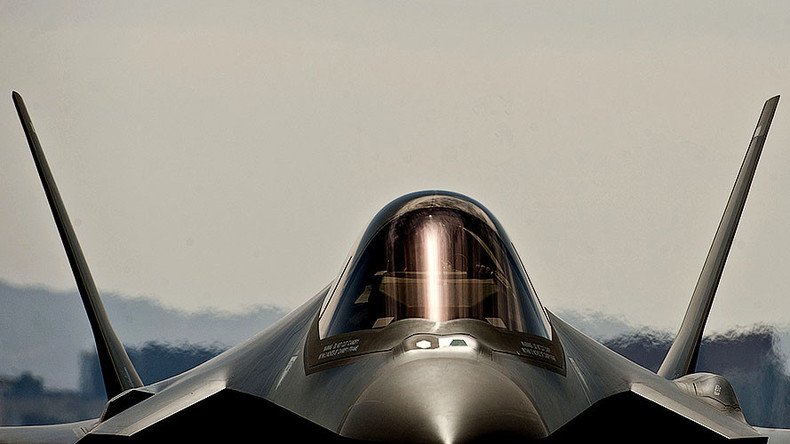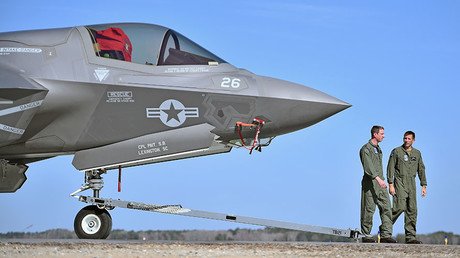‘Tremendous cost!’ $379bn F-35 project in doubt as Trump asks to ‘price-out’ cheaper F-18s

US President-elect Donald Trump signalled that he might dump the controversial F-35 program after asking Boeing to cost up its cheaper and older F-18 Super Hornet jets.
The US President-elect slammed the huge cost of Lockheed Martin’s F-35 stealth fighter jet, saying in a tweet that he asked Boeing, the manufacturer of the F-18, to offer a lower price for the “comparable” aircraft.
Based on the tremendous cost and cost overruns of the Lockheed Martin F-35, I have asked Boeing to price-out a comparable F-18 Super Hornet!
— Donald J. Trump (@realDonaldTrump) 22 декабря 2016 г.
The F-35 program and cost is out of control. Billions of dollars can and will be saved on military (and other) purchases after January 20th.
— Donald J. Trump (@realDonaldTrump) 12 декабря 2016 г.
The problem is, these are two very different aircraft, which means that it might be quite a difficult request for Boeing or the military to pull off.
At the moment, the US is slated to buy 2,443 F-35s, valued at an acquisition cost of $379 billion, according to Business Insider. This makes it one of the most expensive weapons projects in history, but there is a reason for that. The fifth-generation F-35 is expected to replace the aging aircraft of the Air Force, Marines, and Navy.
The F-35 was designed to accommodate the unique needs of each branch of the military: the F-35A is designed for the Air Force, the F-35B has capabilities that make it perfect for the amphibious Marine Corps, and the F-35C is designed for the Navy.
The Lockheed Martin F-35 Lightning II was chosen as a unified aircraft platform for the US Army, Navy, and Air Force under the Joint Strike Fighter program.
The program is notorious for significant delays and running over budget. The engineers have yet to resolve numerous issues related to software glitches and reliability, while the actual performance of the pricey plane is subject to debate.
While each aircraft has its own capabilities, they are also part of a family, which allows them to share what they see with their counterparts.
“Fifth-generation technology, it’s no longer about a platform. It’s about a family of systems, and it’s about a network, and that’s what gives us an asymmetric advantage,” Gen. David Goldfein, the Air Force chief of staff, said during a Pentagon briefing.
All aircraft in the F-35 family are also designed for stealth – even the shape of the F-35, as well as the material, make it nearly invisible to radar. The F/A-18 does have some radar-reducing measures, but it’s not the same thing.
The F-18 was designed as both a fighter and attack aircraft, capable of carrying a wide variety of bombs and missiles, supplemented by the 20-mm M61 Vulcan cannon. The Hornet saw its first combat deployment during the 1986 US bombing of Libya, and was subsequently used in the 1991 Gulf War and 2003 Iraq War.
For its upgraded version – the Super Hornet – the Navy directed that the YF-17 be redesigned into the larger F/A-18 Hornet to meet the requirement for a multi-role fighter to complement the larger and more expensive Grumman F-14 Tomcat serving in fleet defense interceptor and air superiority roles.
Outside the US, it is currently used in the air forces of Australia, Canada, Finland, Kuwait, Malaysia, Spain, and Switzerland.
To give the jet comparable stealth capabilities, Boeing would have to change the shape of the plane entirely. In order to replace the F-35, Boeing would need to redesign the F-18 from the ground up, which could take fifteen years to develop – if nothing goes wrong.
Scrapping such projects would have some precedent. In 1977, US President Jimmy Carter canceled the B-1 strategic bomber program, though it was revived by his successor, Ronald Reagan.
On Wednesday, Trump met with the CEOs of Lockheed and Boeing. After the meeting, Dennis Muilenburg of Boeing said the costs for a replacement to Air Force One would not go up – another project Trump has described as too expensive.













